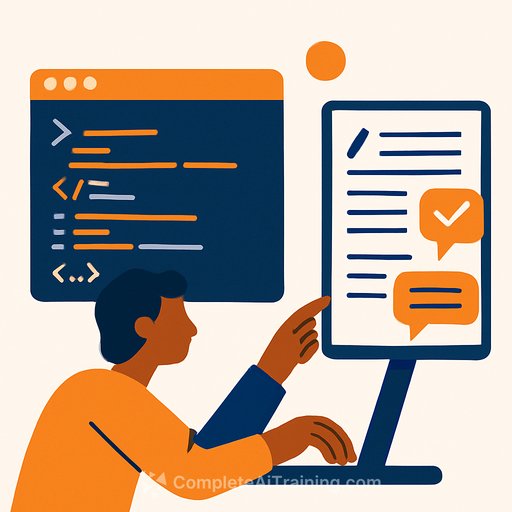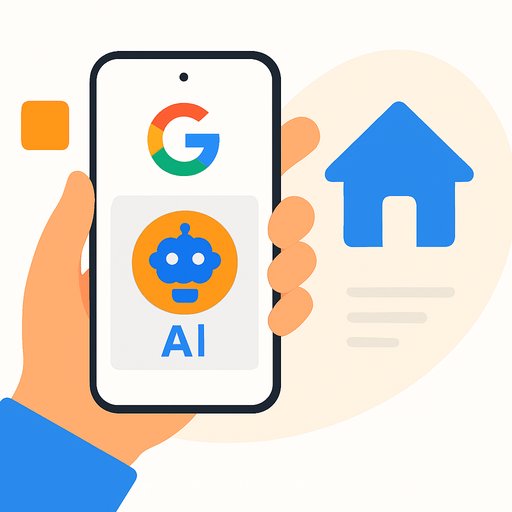Claude Code Brings AI Directly to the Terminal-And It Changes How Product Teams Build
"Terminal, interestingly, is actually the perfect form factor for an LLM because you're giving text in, you're getting text out." That insight from Meaghan Choi at Anthropic sums up the move: keep the interface simple, let the model do the heavy lifting, and meet developers where they work.
In a discussion with Alex Albert, Choi outlined how Claude Code integrates into the CLI to deliver direct edits, task orchestration, and PR-level changes-without bouncing between web apps and local files. For product leaders, the takeaway is clear: less context switching, tighter feedback loops, and a wider set of contributors able to act on ideas.
Why the terminal is the right surface
The CLI is universal. It's fast, scriptable, and always on hand. With LLMs, text-in/text-out makes the terminal a natural interface-no extra UI layers to slow you down.
That simplicity supports a "thin wrapper" design. Keep the surface clean so the model can work directly on files, branches, and tasks. This reduces overhead and speeds iteration across teams.
What is a CLI? * Anthropic docs
From autocomplete to PR-level changes
Early AI coding tools helped with lines and snippets. Claude Code moves to full files, multi-file refactors, and task bundles that resemble small PRs.
That shift matters for product development. You can scope a feature, have the agent propose structured changes, and review diffs in one flow-reducing handoffs and idle time.
Integrated workflow, fewer handoffs
Copying from a chat window into local files is a time sink. Claude Code goes from prompt to direct file edits, then into branch and PR workflows you already use.
That means faster spikes, quicker reversions if needed, and cleaner reviews. You keep your source of truth and your process intact.
Broader contributors, tighter loops
Choi called it a new "skill tree" for non-technical folks. Designers and PMs can ask for use cases, edge states, or implementation approaches, then see actual diffs-without waiting for a full engineering cycle.
Designers can scope features by sharing images for estimates, debate trade-offs with engineers, and even ship P2 polish themselves. The result: fewer backlogs of "nice-to-haves" and more momentum.
Design principles that scale across your stack
Simplicity and transparency. The CLI forces clarity: minimal noise, clear diffs, direct access to the model's output.
For internal AI tools, apply the same rules: keep the interface thin, make changes reviewable, and let the model's reasoning and edits stay visible so teams trust the flow.
Where product teams see value fast
- Refactors and migrations (config files, API clients, folder structures)
- Scaffolding features and tests tied to acceptance criteria
- Bug triage with direct, explainable fixes
- Docs upgrades and inline comments that match code updates
- Design polish passes that rarely make the first release
Adoption checklist
- Start in a non-critical repo. Set branch protections and require reviews.
- Enable dry runs: propose diffs before writes. Keep audit logs of prompts and edits.
- Define prompt templates for common tasks (refactor, test-gen, migration, docs).
- Restrict package changes and external calls unless explicitly approved.
- Standardize review steps: why, what changed, test plan, roll-back path.
- Train non-engineers on basic Git flows so they can contribute safely.
Metrics to track
- Cycle time from task opened to merged
- Review turnaround time and change failure rate
- Percentage of P2 items shipped each sprint
- Context switches reduced (time outside IDE/terminal)
- Diff size vs. defect rate for AI-initiated changes
Guardrails to keep quality high
- Always run in branches with mandatory code review and CI checks
- Limit file-system scope and secret access; use least-privilege tokens
- Mandate test updates for any functional change
- Block dependency upgrades unless explicitly requested
- Pin tool versions and keep a changelog of agent prompts and outputs
What this means for product leaders
Shorter loops and clearer ownership. Designers and PMs can move ideas forward, engineers keep control through reviews and CI, and the model handles the grind work.
The org ships more, argues less, and spends its energy on the few decisions that matter.
Next step
Pick a pilot area-docs cleanup, test coverage, or a small feature-and run a two-week sprint with clear metrics and guardrails. Keep the interface thin, keep the diffs visible, and let the model shine.
Want structured, role-based upskilling for your team? Explore our Claude-focused certification to standardize prompts, reviews, and safety across your workflows.
Your membership also unlocks:






